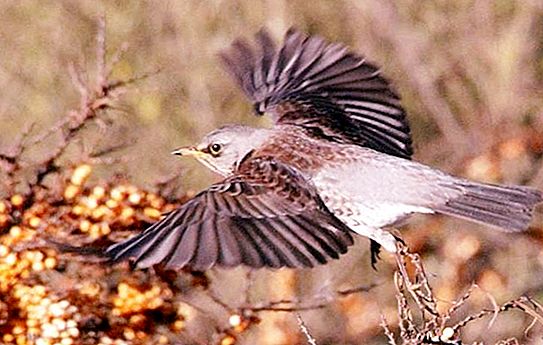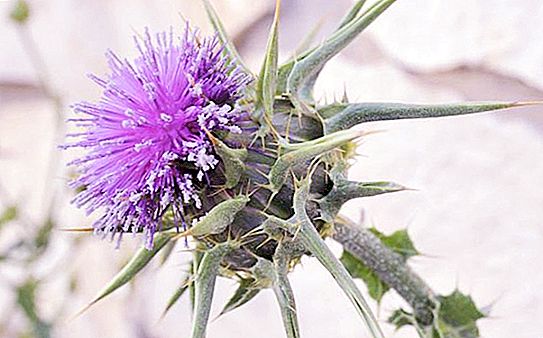Fieldbird - thrush - a bird belonging to the order Sparrow, family Drozdovye, genus Drozdy. Biological group - harmful birds.

Females and males have the same color, in which there are white, black, gray-bluish and reddish hues. The body is 25-28 cm long, the wing length is 15 cm, and the mass is about 100 g. Here it is, the thrush of the mountain ash. The photo shows him well.
He prefers to live on the fringes of deciduous and coniferous forests, near floodplain thickets, in city parks, gardens and in personal plots. Distributed almost everywhere. The most unobtrusive of all blackbirds.
Omnivorous bird. In spring and summer it feeds mainly on insects, worms, snails, in winter and autumn - berries, fruits, seeds. It can feed both on trees and on the ground.
In winter, these thrushes give particular preference to mountain ash. No wonder they were called that. With a plentiful harvest, birds can linger in one place for a long time until they have eaten all the berries. Fieldbird thrush is the main distributor of seeds of these plants. Having been in the gastrointestinal tract of birds, seed germination does not lose.

A flock, flying on a mountain ash tree, spreads over it. Tearing and swallowing berries, birds relatively evenly clean the tree from its fruits. Part of the berries falls to the ground, and they are not lazy to go down to pick up what has been dropped. Then on the snow (if it lies) their tracks are clearly visible. By the way, the fieldfare has the largest tracks of all thrushes.
Fieldbird - thrush, migratory, flocking bird. It is nested by colonies in which there can be up to 30 pairs. Nests - deep, durable bowls, twisted from thin twigs, grass and secured by clay soil. They are built in the forks of thick branches of trees and shrubs, at various heights.
Sometimes colonies are ravaged by crows, jays, magpies. But the fieldfare is not idle, they protect their nests, "shelling" enemies with droppings. This is a serious weapon, since the pollution is so strong that birds with glued feathers cannot fly. People caught in the colony can also get it.

During the summer period, the female lays eggs twice. In clutch there are from 4 to 7 eggs of interesting color - greenish with brown spots. The male assumes the protection of the nest and the female. Chicks are fed together. The chicks spend the first 12-14 days in the nest, then fly out of it, but are completely unprepared for independent life. Parents continue to patronize them, feed them, teach them to fly.
Young growth is huddled in flocks and roams, looking for places for feeding. Later, second broods join their ranks. By fall, large flocks form, which include both young and adult birds.
The thrush of mountain ash can harm berry plantations, including strawberry. They eat some of the berries, but they peck a much larger amount. Damage currants, blueberries, gooseberries, raspberries, sea buckthorn, juniper, viburnum, cranberries, red elderberries, cherries, pears, apples. These birds cause great harm to nurseries that breed especially valuable and new varieties of fruit and berry crops. Some states even allow the shooting of thrushes in a certain period of the year.
The thrush singing is unpleasant, crackling, chirping. Because of these sounds, the bird is not suitable for keeping at home.




